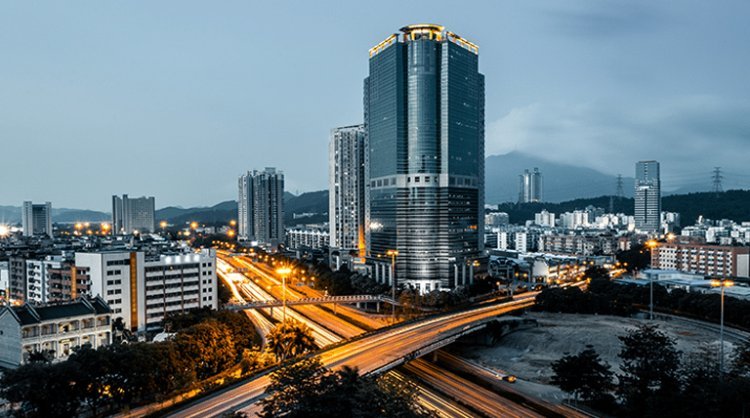Introduction
The Blue Area of Islamabad, Pakistan, stands as a testament to the city's progress and development. From its humble beginnings to its current status as a bustling hub of commerce and culture, the Blue Area has undergone a remarkable transformation over the years. This article delves into the history, growth, and significance of Islamabad's Blue Area, exploring its evolution through different phases of development.
1. Origins and Early Development
The story of the New Blue Area Islamabad dates back to the planning stages of Islamabad, the purpose-built capital city of Pakistan. Designed by the renowned Greek architect Constantinos Apostolou Doxiadis in the 1960s, Islamabad was envisioned as a modern city with designated sectors for residential, commercial, and administrative purposes.
The Blue Area was initially designated as a commercial district, strategically located between the residential sectors and the government enclave. In its early years, it comprised mostly of government offices, diplomatic missions, and a few commercial establishments. Its name derived from the predominant color of the buildings in the area, constructed with blue-tinted glass facades.
2. Growth and Expansion
During the 1980s and 1990s, Islamabad witnessed significant growth and development, and the Blue Area expanded rapidly. The construction of modern office buildings, shopping malls, and hotels transformed the area into a bustling commercial center. The influx of businesses, both local and multinational, contributed to its economic significance.
One of the key factors driving the growth of the Blue Area was its strategic location and infrastructure development. Accessibility improved with the construction of major roads and highways connecting it to other parts of the city. The expansion of public transportation networks further facilitated movement within the area, attracting more businesses and visitors.
3. Commercial Renaissance
The early 2000s marked a period of commercial renaissance for the New Blue Area Islamabad Price. With the liberalization of the economy and the emergence of Islamabad as a regional business hub, the demand for prime real estate in the area surged. This led to the construction of modern high-rise buildings and commercial complexes, changing the skyline of the Blue Area.
The Blue Area became home to a diverse range of businesses, including financial institutions, multinational corporations, law firms, and technology companies. The presence of these entities not only boosted the local economy but also positioned Islamabad as a competitive business destination on the international stage.
4. Cultural and Recreational Attractions
In addition to its commercial significance, the Blue Area also emerged as a cultural and recreational hub. The development of shopping malls, restaurants, and entertainment venues added to its allure, attracting visitors from across the city.
The Centaurus Mall, one of the largest shopping centers in Pakistan, became a landmark of the Blue Area, offering a mix of retail, dining, and entertainment options. The presence of cinemas, cafes, and art galleries further enriched the cultural fabric of the area, providing residents and visitors with opportunities for leisure and relaxation.
5. Sustainable Development Initiatives
In recent years, there has been a growing emphasis on sustainable development in the Blue Area. With concerns about environmental conservation and urban planning, efforts have been made to promote green spaces, energy efficiency, and eco-friendly practices.
Several projects have been undertaken to enhance the sustainability of the Blue Area, including the development of parks, pedestrian-friendly zones, and cycling tracks. Green building initiatives aim to reduce carbon emissions and minimize the environmental footprint of new developments, ensuring that growth is balanced with ecological preservation.
6. Future Prospects and Challenges
Looking ahead, the Blue Area continues to hold immense potential for further growth and development. With ongoing infrastructure projects, such as the expansion of road networks and the construction of metro lines, connectivity is expected to improve, attracting more investment and business opportunities.
However, the rapid urbanization and commercialization of the Blue Area also present challenges, including traffic congestion, pollution, and the need for sustainable urban planning. Addressing these challenges will require collaboration between the government, businesses, and civil society to ensure that growth is inclusive, equitable, and environmentally sustainable.
Conclusion
The evolution of Islamabad's Blue Area reflects the city's journey from a planned capital to a dynamic metropolis. From its origins as a government-centric district to its current status as a vibrant commercial and cultural center, the Blue Area has undergone significant transformation over the years.
As Islamabad continues to grow and develop, the Blue Area will remain a focal point of progress and prosperity, attracting businesses, residents, and visitors alike. By embracing sustainable development principles and addressing urban challenges, the Blue Area can maintain its status as a symbol of Islamabad's success and modernity in the years to come.












![Blog Submission Sites 2024 [High DA]](https://blognow.co.in/uploads/images/202306/image_100x75_6494a03eaff5e.jpg)
![Article Submission Sites 2023 [High DA & PA]](https://blognow.co.in/uploads/images/202307/image_100x75_64c4181f17036.jpg)
![Classified Submission Sites 2023 [High DA & PR]](https://blognow.co.in/uploads/images/202306/image_100x75_649dcd5260808.jpg)




![Article Submission Sites 2023 [High DA & PA]](https://blognow.co.in/uploads/images/202307/image_750x415_64c4181f08ed5.jpg)
![Classified Submission Sites 2023 [High DA & PR]](https://blognow.co.in/uploads/images/202306/image_750x415_649dcd5247eeb.jpg)
![Blog Submission Sites 2024 [High DA]](https://blognow.co.in/uploads/images/202306/image_750x415_6494a03e96bfa.jpg)
